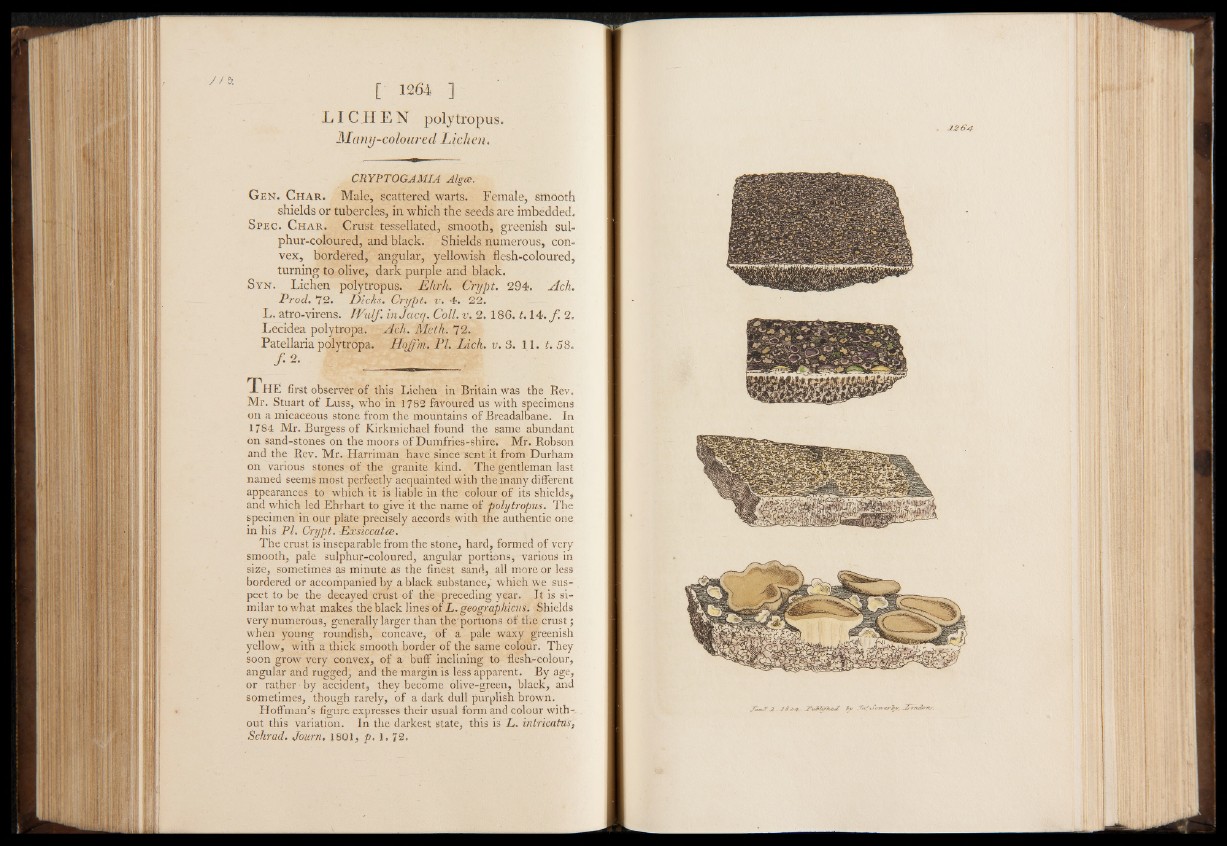
//& . [ 1264 ]
L I CHEN polytropus.
Many-coloured Lichen.
CRYPTOGAMIA Algcc.
Gen. Char. Male, scattered warts. Female, smooth
shields or tubercles, in which the seeds are imbedded.
Spec. Char. Crust tessellated, smooth, greenish sulphur
coloured, and black. Shields numerous, convex,
bordered, angular, yellowish flesh-coloured,
turning to olive, dark purple and black.
Syn. Lichen polytropus. Ehrh. Crypt. 294. Ach.
Prod. 7 2 . Dicks. Crypt, v. 4. 2 2 .
L. atro-virens. Wulf. in Jacq. Coll. v. 2 . 1 8 6 .1. 14. f 2 .
Lecidea polytropa. Ach. Meth. 7 2 .
Patellaria polytropa. HoJj'm. Pi. Lich. v .3 . 1 1 . t. 58.
/ 2 . ' ~
T h é first observer of this Lichen in Britain was the Rev.
Mr. Stuart of Luss, who in 1782 favoured us with specimens
on a micaceous stone from the mountains of Breadalbane. In
1784 Mr. Burgess of Kirkmichael found the same abundant
on sand-stones on the moors of Dumfries-shire. Mr. Robson
and the Rev. Mr. Harriman have since sent it from Durham
on various stones of the granite kind. The gentleman last
named seems most perfectly acquainted with the many different
appearances to which it is liable in the colour of its shields,
and which led Ehrhart to give it the name of polytropus. The
specimen in our plate precisely accords with the authentic one
in his PI. Crypt. Exsiccatce.
The crust is inseparable from the stone, hard, formed of very
smooth, pale sulphur-coloured, angular portions, various in
size, sometimes as minute as the finest sand, all more or less
bordered or accompanied by a black substance,, which we suspect
to be the decayed crust of the preceding year. It is similar
to what makes the black lines of L. geographicus. Shields
very numerous, generally larger than the'portions of the crust;
when young roundish, concave, of a pale waxy greenish
yellow, with a thick smooth border of the same colour. They
soon grow very convex, of a buff inclining to flesh.-colour,
angular and rugged, and the margin is less apparent. By age,
or rather ■ by accident, they become ólive-green, black, and
sometimes, though rarely, of a dark dull purplish brown.
Hoffman's figure expresses their usual form and colour with-,
out this variation. In the darkest state, this is L. intricatas,
Schrad. Journ. 1801, p. 1. 72.